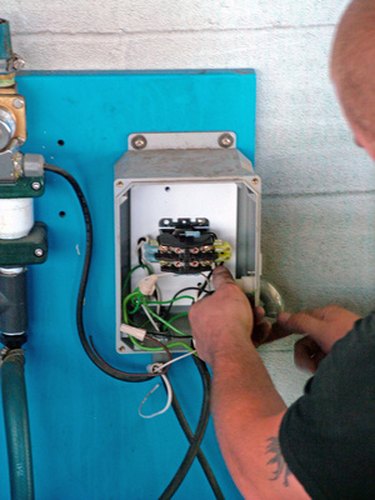Things You'll Need
Screwdriver
Voltage tester
Wire gauge
New circuit breaker

Changing the size of a circuit breaker to increase the available current is a great way to burn your house down, melt an outlet or ruin an appliance. The circuit breakers in your home's service panel are designed to prevent dangerous current overloads. A circuit breaker is sized to match the amount of electricity the wire can safely carry. If you are having trouble with a circuit breaker that is constantly tripping, the circuit is either overloaded or has other problems. You should install a larger circuit breaker only if the current breaker is undersized for the circuit's wiring.
Step 1
Turn off the power to your service panel by shutting off the main breaker.
Video of the Day
Step 2
Remove the service panel's cover. Use a screwdriver to remove the screws securing the faceplate and set it aside.
Step 3
Test the voltage inside the panel. If the voltage tester does not read zero, check the main breaker again.
Step 4
Check the wire size on the circuit you want to upgrade with a wire gauge. Consult your local electrical and building codes for recommended sizing.
Step 5
Pull the old breaker out of the service panel.
Step 6
Loosen the clip holding the wire to the breaker with a screwdriver and remove the wire.
Step 7
Attach the wire to the new breaker.
Step 8
Insert the new breaker into the service panel.
Step 9
Replace the service panel's cover and restore power to the panel by turning the main breaker on.
Tip
Consult a licensed electrician before attempting this.
Underwriters Laboratories recommends that 15-amp breakers be wired with 14-gauge wire as a minimum. The minimum for a 20-amp breaker is 12-gauge wire.
Warning
Do not attempt any work on or in the service panel if your voltmeter reads anything but zero.
Using a breaker that is too large for the wiring can cause property damage, injury or death.
Video of the Day